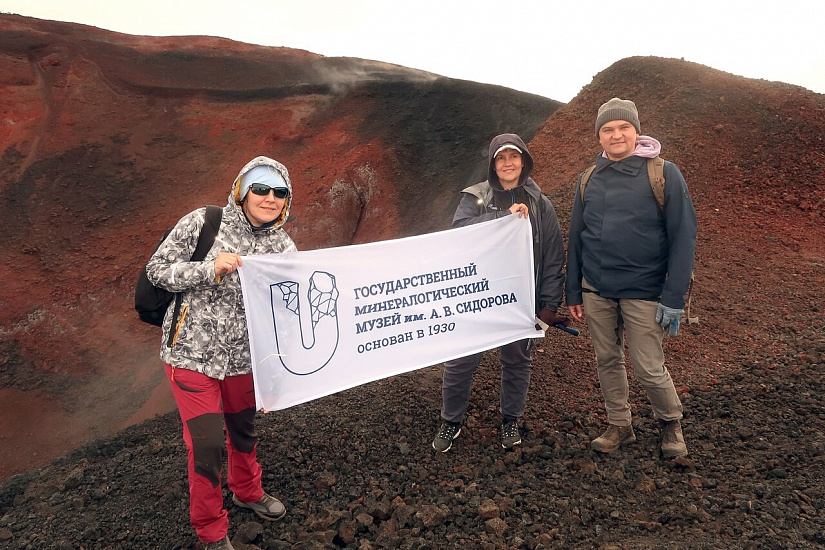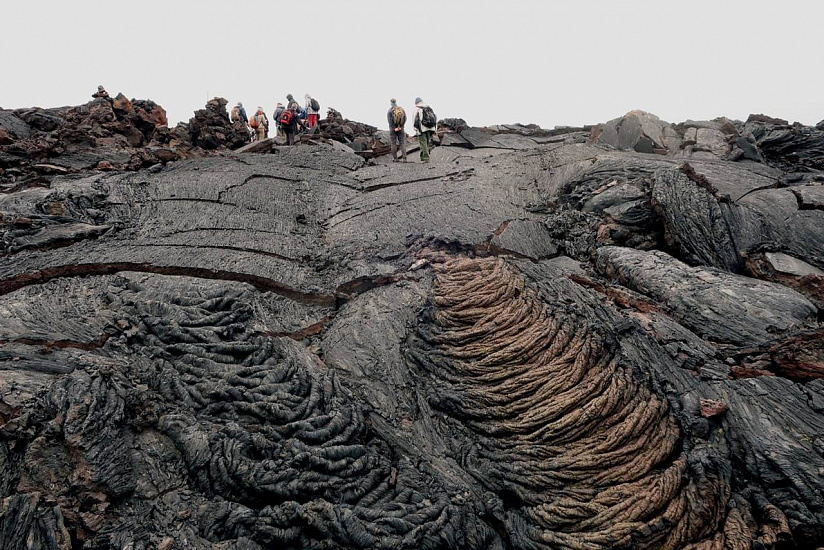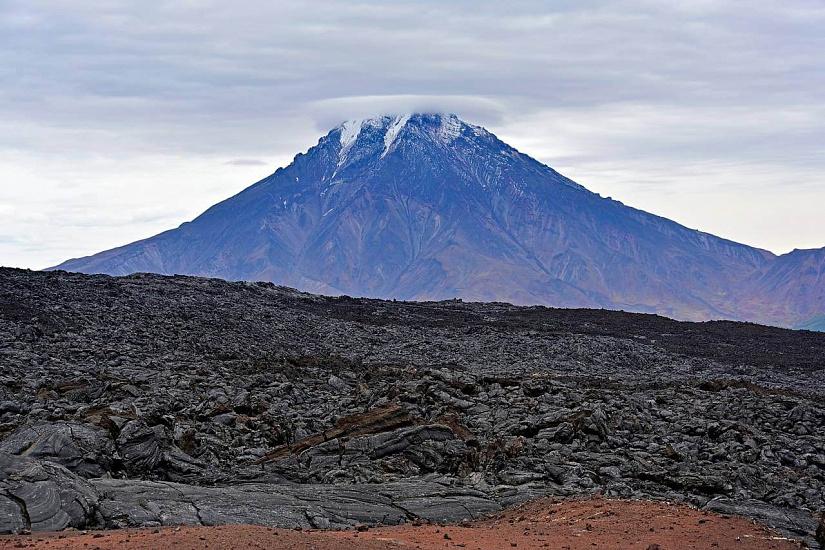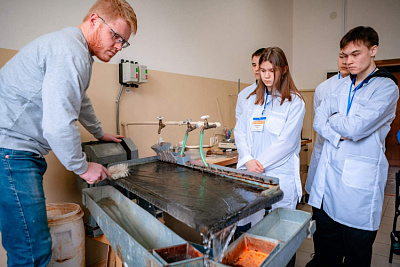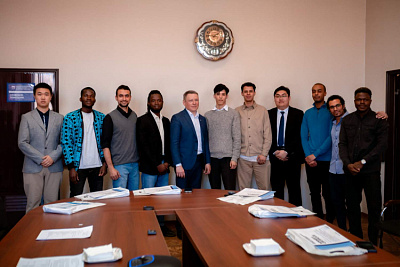Employees of the Mineralogical Museum of INRTU presented samples of solidified lava at a lecture on the results of the Kamchatka expedition

According to museum director Polina Loginova, the lecture hall is an educational project aimed at popularizing geology. Polytechnic plans to monthly inform everyone about the minerals fr om the collection in an informative and accessible way, and to introduce the research work of the museum. The lecture began with a meeting with the participants of the Kamchatka expedition. A special interest in the event was shown by Irkutsk guides and tour guides.
Ekaterina Kaneva and Tatiana Radomskaya, employees of the Mineralogical and Geochemical Research Laboratory established by INRTU together with the Institute of Geochemistry SB RAS, went to Kamchatka in the fall of 2022. They were joined by the representative of IGC SB RAS Roman Shendrik, who actively supports scientific and popular science projects of the Polytechnic Institute.
Kamchatka expedition lasted two weeks, the first of which scientists devoted to participation in the XII International School of Earth Sciences. The forum was held at the Institute of Volcanology and Seismology FEB RAS (Petropavlovsk-Kamchatsky). Irkutsk scientists made presentations on the study of minerals from the points of view of geology, chemistry and physics.
They spent the next week on an expedition near Tolbachik. This is a massif of two interconnected volcanoes - the extinct Sharp Tolbachik and the active Plosky Tolbachik. The first documented eruption took place in the early 1770s. In the 20th century, the volcano erupted three times: in 1941, 1975-1976 and in 2012-2013. The last two events destroyed all life within a radius of 10 km. Now the Tolbachik neighborhood is covered with a dark lava field.
Ekaterina Kaneva noted that the group was lucky, because the guides were the best volcanologists of Russia. Among them were Sergei Samoilenko, director of the Kamchatka museum "Vulcanarium" and Alexey Ozerov, who worked on volcanoes in Antarctica. Alexander and Maria Belousov, who studied volcanoes in Kamchatka, Indonesia, the Canary Islands, the Lesser Antilles, and elsewhere in the world, also conducted the tour.

"Studying volcanoes is a fascinating and important process that helps predict an eruption, including a catastrophic one.
Every day we were transported in special vehicles to the starting point. Then we spent 10 hours each examining geological sites. The results of the trip were about 20 kg of samples of solidified lava, ash and minerals, extracted manually and with the help of tools. The most attractive of them joined the collection of the Mineralogical Museum of INRTU", - emphasized Ekaterina.
Some fragments are impressive in a variety of colors, from black and red, to yellow and lilac. A piece of rope lava looks unusual. This name can be explained by the fact that the frozen folded stream resembles a rope. For its smooth and undulating surface, the Hawaiians call it "Pahoehoe," that is, lava that is comfortable to walk on barefoot. Resembling a freshly plowed field, the cinder basalt lava is made up of a pile of sharp splinters. The natives nicknamed it "Aa-lava" because when they stepped on it, they felt pain and shouted "Aa." When it flowed, you could hear the sound of frying eggs. A placer of lapilli, a crystal-shaped volcanic eruption found on Tolbachik, was also brought to Irkutsk.
In addition, the museum is decorated with samples of stalactites and stalagmites from volcanic caves, formed as a result of the eruption in 2012-2013. By the way, then Tolbachik erupted for more than nine months. For this reason, even a year later the lava field was smoking and remained warm.

The audience was also addressed by Tatiana Radomskaya, a geologist, who presented general information about volcanoes and their varieties. According to her, volcanoes can be fissured, shield, stratovolcanoes, also cinder cones are distinguished. To the exotic include gas eruptions, in which magma does not come to the surface, but heats the hydrothermal water, ejected in the form of columns of steam. The rarest is the subglacial type, entailing dangerous mudflows. Many of the known types of volcanoes can be found in Kamchatka.

Roman Shendrik devoted the lecture to the route of the expedition, which passed through the sections of the Great Tolbachic fissure eruption. It began in 1975 and lasted 1.5 years. As a result, cones were formed, one of which was called the Big Break. The interest of scientists who visited the site of the breakthrough was attracted by the fumaroles. These are holes wh ere jets of gas with a temperature of more than 200 °C come out. The fumaroles at Tolbachik produce a huge amount of minerals. Some of them, including yellow efflorescence (titanium-rich opals), are included in the new museum collection.
Guide Olga Kolga was interested in the lecture. She introduces tourists to the nature and geological sites of the Angara region and Buryatia, including the extinct volcanoes of the Tunkinsk Valley. She admits that thanks to the lecture she diversifies her tours with new information:
"I have some understanding of geology, as my parents graduated from Irkutsk Polytechnic. However, today I learned that there is such a great variety of volcanoes and types of their eruptions in the world. Some of them are concentrated on Tolbachik. It also surprised me how chemical elements and volcanic processes affect the formation of minerals and rocks. Nature gives us material that can now be seen at INRTU. I often advise my tourists to visit the Mineralogical Museum. Now they will have even more such occasions".

